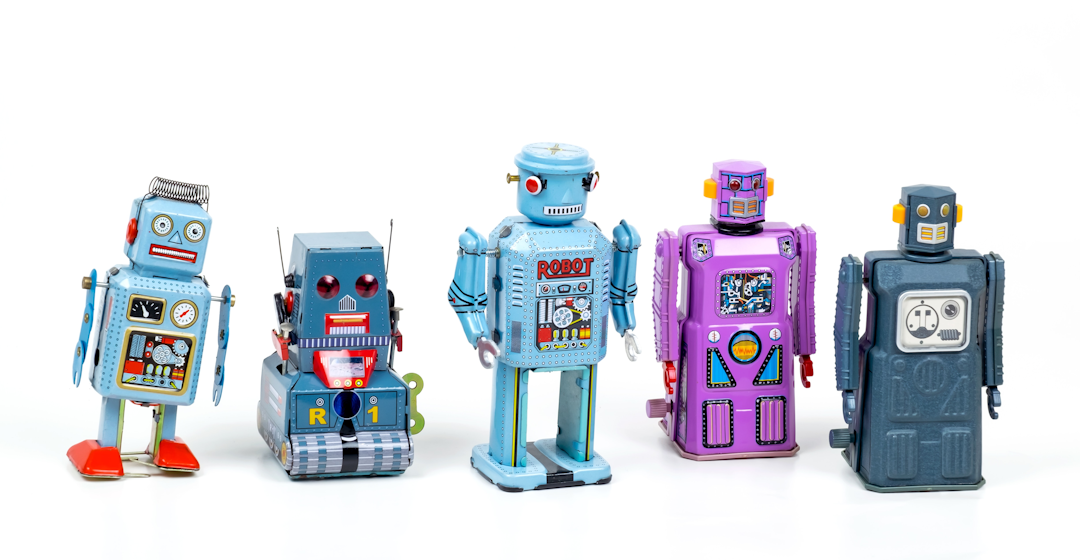
The significance of soft skills in the workplace started to gain recognition only in the past few years. In fact, research and study cases show that soft skills are no less important than hard skills to the success of organizations and the ability to meet their goals.
While hard skills like technical expertise and occupational knowledge are essential for performing certain job tasks, soft skills enable employees to work well with others, resolve conflicts, motivate colleagues, and build an effective company culture. As we transition to an increasingly digital world powered by artificial intelligence, soft skills like adaptability, creativity, and teamwork will become even more crucial for sustaining a competitive edge.
In this article, we'll discuss soft skills training for employees and the role of AI in maximizing ROI. This will cover the critical aspects of AI-assisted soft skills training, including overcoming common challenges, measuring training effectiveness, and the future of AI-assisted soft skills training.

Have the robots really taken over?
By downloading, you agree to our privacy policy.
Understanding soft skills training
Soft skills are now a main requisite in the workplace and the recruiting process. However, people have personal skills at different levels; while someone may be a great problem solver, they might possess poor communication skills.
Soft skills include several competencies, each specifically important in particular contexts. For example, leadership soft skills are important for administrative and managerial employees where critical decisions have to be made.
Effective time management, communication, organization, and critical thinking are some of the soft skills necessary in the workplace. So, organizations have started to implement dedicated training programs to help employees develop soft skills that align with their individual roles, and help drive larger business objectives.
For example, IBM has implemented an AI-powered learning platform called “Your Learning” that uses machine learning algorithms to provide personalized soft skills training to its employees. Another example is Microsoft, which has developed an AI-powered coaching app called “MySkills” that provides employees with real-time feedback on their soft skills, such as communication and collaboration.
Benefits of soft skills training
Companies are fighting for talented staff in today's extremely competitive job market. Filling soft skills gaps to help your workforce perform its best is crucial and puts you ahead of the competition.
Soft skills training can produce significant benefits for both employees and employers. As for employees, soft skills training helps them with the following:
- Develop better work proficiency
- Obtain task-oriented skills to increase productivity
- Learn to communicate and collaborate better with each other
- Increase self-confidence, both inside and outside the workplace
The benefits of soft skills training for employees will certainly be passed on to employers. In particular, providing soft skills training helps employers:
- Retain employees and reduce turnover rates
- Build a versatile and adaptable workforce by expanding employees’ skillsets
- Achieve the organization's goals, maintain its bottom line, and generate more revenue
Traditional methods of soft skills training
Organizations employ several methods to offer soft skills training to their staff. Traditional training methods include courses, workshops, and seminars where employees gather in person for instruction and practice.
For example, an employer might provide time management training by hosting a workshop with presentations, discussions, and role-playing exercises focused on developing time management skills.
However, traditional soft skills training methods often come with these challenges:
- Conducting training that caters to the different needs and competencies of employees
- Setting training times that suit the different work schedules of groups of employees
- Maintaining employee engagement and interest throughout the training program
The role of AI in soft skills training
Given the challenges associated with traditional soft skills training, organizations acknowledge the need to find and employ a more efficient tool, such as AI-powered tools, to maximize training outcomes.
AI is reshaping different aspects of our lives, and it is believed to be revolutionizing the way business processes are carried out, from staff recruiting all the way to content creation.
AI has demonstrated outstanding performance when employed to simplify other work practices, and undoubtedly, it plays a significant role in soft skills training. In contrast to traditional training, adopting AI in the training program helps overcome many challenges.
An example of that is McDonald's, which has developed an AI-powered training program called “McDonald's Global Learning Portal” that uses machine learning algorithms to personalize soft skills training for its employees based on their learning preferences and job roles.
Advantages of AI-assisted soft skills training
AI-assisted soft skills training has the following benefits over traditional methods:
- Offers customized soft skills training programs that optimize training efficiency, catering to employees' preferences and needs
- Tracks employees' progress and interaction with the training material
- Identifies and fills learning gaps
- Provides accurate employee performance feedback which helps them overcome difficulties and challenges
- Suggests soft skills training programs that align with employees' needs and organizational goals
- Analyzes the training program and employees' performance and interaction
- Provides HR specialists with accurate and useful data regarding the training program, helping them evaluate its outcomes and how to improve training going forward
Examples of AI-assisted soft skills training tools
There are many options for selecting an AI-assisted soft skills training tool or software. Each has different features and provides special benefits.
Some AI-assisted soft skills training tools specialize in teaching specific skills, like presentation skills. Others provide online courses tailored to employees' needs, with AI suggesting relevant content, models, and learning paths.
Some examples include:
- Coursera: This platform uses AI to recommend personalized learning paths for developing soft skills based on the learner’s interests, goals, and current skill level. It offers a variety of courses from top universities and industry experts on leadership, teamwork, and emotional intelligence.
- EdApp: This platform uses AI-powered microlearning to deliver short, engaging training modules on various soft skills, such as communication, teamwork, and time management. It also provides personalized learning paths and real-time feedback on the learner’s performance.
- VirtualSpeech: This platform uses AI to create virtual reality simulations for public speaking, sales pitches, and other communication scenarios. It provides real-time feedback on body language, eye contact, vocal tone, and other nonverbal cues.
In addition, some online learning platforms like 360Learning blend collaborative learning with AI-powered tools. This allows and empowers internal subject-matter experts to collaborate with L&D teams to create highly relevant and tailored training at scale, using automated content creation tools.
360Learning’s AI-powered question generator, personalized training recommendations, and real-time peer feedback makes the learning experience much richer and more engaging for learners.
Overcoming common challenges of AI-assisted soft skills training
Implementing AI-assisted soft skills training helps organizations drive better learning and business outcomes. Still, there are some common challenges and key considerations associated with employing these tools in training programs, including:
- Weighing the cost of implementing AI-assisted tools in training against the expected outcomes
- Choosing the right tool that will cover the organization's needs and expectations
- Training employees to use AI-powered tools and make the most out of them
- Addressing fears of job displacement and ethical considerations
- Giving employees access to the technology and resources to participate in AI-assisted soft skills training
It is critical that organizations properly address these concerns about using AI in training, to create a healthy learning culture that supports employees in their continuous development.
Maximizing ROI with AI-assisted soft skills training
Return on investment (ROI) refers to the profits gained from a business investment. This is calculated by subtracting the cost of an investment from the overall outcome.
Investing in employees' soft skills development can yield considerable gains and a high ROI, factoring in how soft skills training can level up the organization's service quality.
ROI can be maximized with the use of AI-assisted soft skills training by following these methods:
- Have a thorough preparation phase to achieve your learning goals with AI-assisted training programs.
- Ensuring the chosen AI tool offers the required features in the training.
- Testing the training program's efficiency on a smaller group of employees before adopting it across the entire organization.
- Referencing case studies of companies that have achieved exceptional ROI through AI-assisted soft skills training and comparing their strategies to your organization's needs.
Measuring the effectiveness of AI-assisted soft skills training
After deploying soft skills training across the workforce, it is essential to measure the effectiveness of this training. By evaluating learners’ performance, organizations can pinpoint weaker areas of the training program that need improvement. By collecting learner feedback on the training, they can adjust the content even further to optimize employees' learning experience.
Organizations can effectively evaluate the success of the training by identifying major key performance indicators (KPIs), which include:
- Analyzing employees' performance before and after taking the training program
- Evaluating the business outcomes and performance after the training
- Measuring the level of achievement of the program's objectives
Additionally, AI-assisted training stands out for its ability to generate real-time data related to each KPI, enabling organizations to evaluate the training performance with more accuracy and make smarter data-driven decisions.
For example, PepsiCo has implemented an AI-powered training platform called PepsiCo GoLearn that provides employees with personalized soft skills training and tracks their progress using data analytics.
The future of AI-assisted soft skills training
Developing soft skills for the workplace is a pressing need for organizations in a dynamic job market. Going forward, we’ll see soft skills training programs increasingly integrate AI, bringing more advanced and effective training solutions to L&D teams.
The future holds a lot of opportunities for this sector. Notably, tech companies are focused on developing more powerful AI features to track employees' performance and provide more actionable insights and feedback, while creating more engaging training experiences.
Despite their rapid growth, organizations shouldn’t assume that all employees will be proficient at using AI-powered systems right off the bat. L&D teams should evaluate their employees' comfort level and prior experience with AI tools, before assigning complete training programs with this kind of technology.
That means making sure your workforce has access to comprehensive training on how to use AI-assisted softwares to reap the maximum benefits from them.




